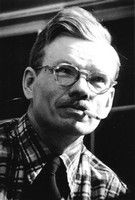Kenneth Stubbs |
 |
|
Kenneth Stubbs' first one-man show in three years has just opened at Franz Bader's Gallery, 1705 G Street, N.W., to remain through February. The Corcoran School painting instructor's last solo was at George Washington University library the end of 1951. The present collection of more than 20 tempera (casein) and water color paintings covers the interval between. Mr. Stubbs is a painter of solid ability whose works run a parallel course. Some are naturalistic, others modern to abstract. In answer to this reviewer's inquiry as to his objectives, he said: "I prefer to think I have a position and a direction, rather than an objective. The former is based on a belief in the tradition of good painting as practiced by the masters; the latter, on the development and change that occur in my ideas about nature and life. Tradition and Ideas"To be more specific, I feel that the structure of my painting is based on tradition, while the content is based on ideas. First of all, the forms are real to me. Where they also say something, so much the better. If a modern statement is the result, it is modern simply because my interests are modern. "The fact that many of my paintings are concerned with flat or semiflat patterns that depart more or less from the appearance of nature is simply a matter of style. This style comes from the need to have the entire painting, rather than the separate object, express the idea. The fact that my water colors and drawings are more nearly a reflection of nature is a matter of relaxed observation." Mr. Stubbs' traditional approach is well exemplified in his beautiful Italian landscape seen from a height, surrounded by mountains, and in his "Positano." The colors are soft and grayed as in natural appearance. The large "Basketball" is an excellent example of his work in flat pattern. The scale of bright colors and angular faceted forms combine to give the work a feeling of fast action. Florence S. Berryman, Washington Star, February 6, 1955, page E-11
|
See also: Show Announcement Works Shown (partial list) Washington Post Review |